https://www.girlsgonestrong.com/
Walking into a new gym or fitness facility can feel a little (or a lot!) intimidating for some of us. Looking around on that first visit, you see members who appear to know the gym inside and out, who are comfortable and not the least bit self-conscious.
And then there’s you. Walking by with your stuff, looking around, taking it all in. As the new member, you might sometimes feel lost (I mean, where is the darn locker room?!), and you might get the notion that everyone else is staring and judging. Pssst… they’re not!

At Girls Gone Strong most of us have been new to a gym more than once. Each first time can be intimidating or exciting, or a little bit of both. Gyms, much like people, are all unique to some degree. Each one has its own culture, type of member, and overall vibe.
Today we want to share some advice to help you feel like you’re walking into the gym like a boss, whether it’s your first first time, or your tenth first time.
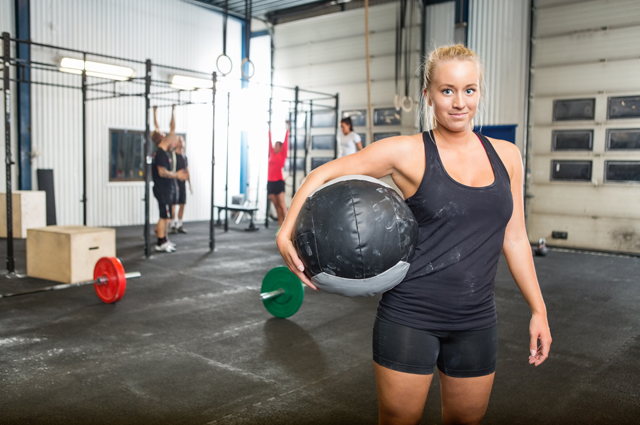
First things first: Do a little “recon”
The very first step you can take toward feeling confident at your new gym is to ask for a tour so you can get to know the lay of the land and get a feel for the culture and vibe of the place.
Ask questions, don’t hold back. Find out where the locker room. Ask about the type of equipment they have (kettlebells, suspension training straps or rings, bands, barbells, platforms, chains, etc.). Some gyms restrict the use of certain equipment for personal training clients only, so ask whether using them all is included in your membership. Ask if the gym offers classes, personal training or any other services.
After you’ve got the basics covered, it’s good to know some standard, and often unwritten but generally understood, rules and common courtesies that generate good gym karma and can keep you and your fellow gym members safe and happy.
In the Locker Room
It’s a good idea to wear sandals or slippers when changing and showering. No matter how well-kept and clean the area looks, locker rooms and showers can be a warm, moist petri dish where microscopic yuckies can easily multiply.
Let’s be crystal clear: at Girls Gone Strong we unequivocally encourage body confidence. However, unless it’s culturally appropriate (both abroad in foreign gyms, or at home in a particular gym), consider limiting the amount of time you spend hanging around nude in the locker room—especially if seems like you’re the only one doing that. Not only could it make others uncomfortable if it’s just not that kind of culture, it’s too easy to pick up extra germs and microbes. Our skin is an important barrier, but it also absorbs a lot of what’s in our environment.
Take only as much space as you need on a bench or counter with your stuff, as a consideration to other members who need to use that space or the space around you. Some people may speak up, but often, they don’t. If all the contents of your gym bag are on the bench, or all your make-up and toiletries are spread across the whole counter, it may be a huge inconvenience to someone else who’s also trying to get ready and head out to work on time. Don’t hesitate to politely ask for some space if you’re the one needing a little more room.
If they’re available at your gym, and you tend to have a lot of stuff with you in the locker room, it might be worth it to spend a little extra and rent a long-term use locker. You can use it to store workout clothes, shoes, shampoo, and shower essentials, rather than lugging it back and forth every time. If you’d rather not leave things at the gym, invest in a combination lock and a good gym bag to safely store your stuff in a day-use locker.
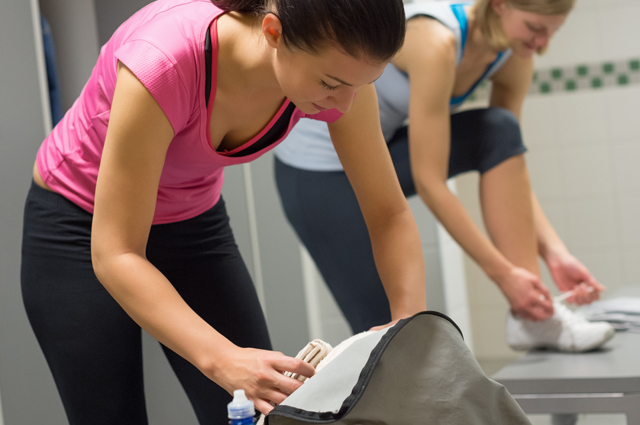
If you use the towels provided by the gym, make sure you put them in the “used towel” laundry bin after you use them.
Understandably, the gym can be a smelly place—nothing that a little spritz of something scenty can’t fix! However, be considerate when using fragrances and lotions. A sneezing fit can really put a damper on someone’s workout.
What to Wear
Some gyms have a dress code, and some don’t. Some enforce it, and some don’t. When in doubt, check your gym’s policies on shoes and clothing, or at the very least, use common sense by evaluating your environment and the gym’s culture. It seems obvious that you shouldn’t wear jeans or khakis with big pockets that can not only be abrasive on the upholstery of benches and seats, but more importantly this type of clothing can pose safety risks by restricting your movements or getting caught on equipment.
Depending on the gym and the type of activities and equipment available, members might want to wear clothing that covers up more skin (rather than just shorts and a sports bra), to prevent the spread of skin infections.
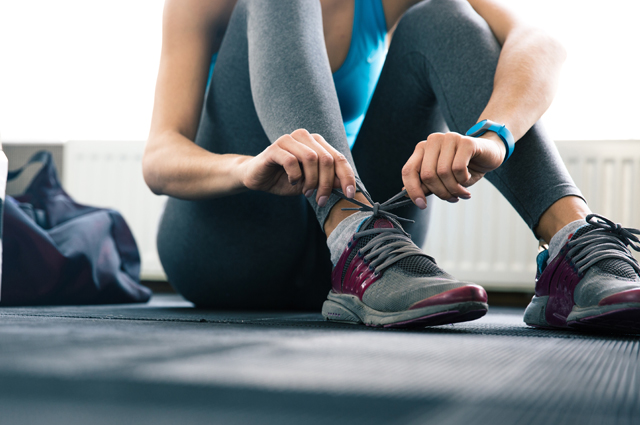
Most gyms also request that you wear shoes, though some will allow you to go barefoot or wear socks for warm ups and certain lifts. For example, some people prefer to wear Olympic weight lifting shoes, socks, or simply go barefoot while deadlifting. It’s a good idea to check if this is OK before you do it.
Where to Warm Up and Stretch
We always encourage that you perform a good warm-up before your workout. Find an area designated for warming up, stretching, foam rolling, etc. If your gym doesn’t have a designated space, be courteous to other members and find a low-traffic spot that’s clear of equipment and people and provides enough room to do your thing safely. Perhaps a hallway, the space behind or adjacent to cardio machines, or even outside if it’s a nice day and there’s a safe area where you won’t get hit by a car or be in someone’s way.
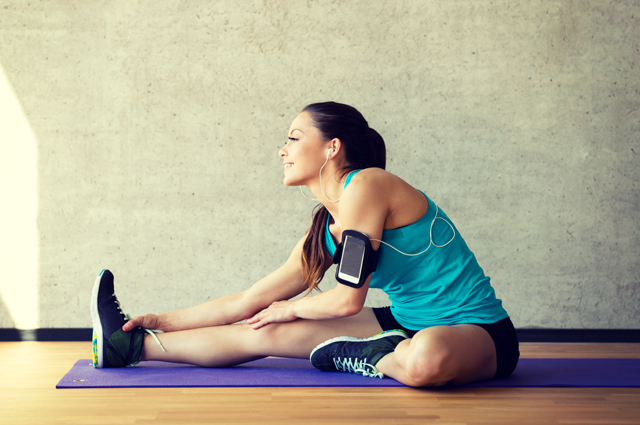
In the Gym
“A place for everything and everything in its place,” as the saying goes. Isn’t it such a pain when you go look for a particular piece of equipment (for example, dumbbells or a cable attachment), and it’s not where you expect it to be? And it’s so confusing and inconvenient when you finally spot it across the room, unattended and aren’t sure if someone else is using it, or if they’re done and just left it there. And sure, some people joke that “it’s part of the workout” to carry it around or clean up after someone else, but come on. It’s no fun to unload a fully-loaded barbell someone else left behind in order to prepare it for your own workout.
Yeah, don’t be that person to someone else. The courteous thing to do (without exception) is to unload the bar and re-rack all weights and dumbbells. It’s also a great way to keep the area safe for yourself and other members. On the flip side, if you do need some help to unloading a bar, or want someone to clear their weights out of the way (and ideally back to their home on the rack) after they’re done with them, speak up and ask them.
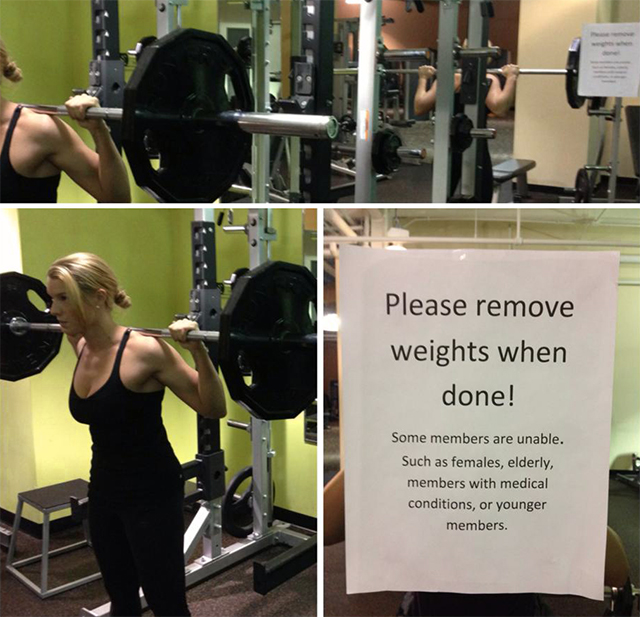
Uhhh…what?!
If you don’t need a particular piece of equipment, make sure you don’t appear to be “hoarding” it and keeping other members from using it. Whether it’s dumbbells, a bench that’s just acting as a place to rest your jacket and water bottle, or the squat rack if you’re doing something that can be done outside of it.
Speaking of benches, if there is only one adjustable bench (a bench that can adjust from flat to incline) try not to use that bench to perform flat bench exercises if you notice other non-adjustable flat benches available. It’s not a huge deal, just a thoughtful courtesy for fellow members.
It can get annoying in a hurry (not to mention how potentially not safe it is) to have to repeatedly step around someone who’s using way more space than they actually need. As with your space in the locker room, be aware of the space and equipment you’re using in the gym, and spend only the necessary amount of time using it, particularly if you notice others waiting or trying to share the space. That’s not to say you should hurry and move along. You pay your membership dues like everyone else, so don’t let anyone make you feel like you need to rush through your workout.
By the way, it’s totally OK to politely ask someone to move or make some room for you if you see them “hoarding” a space or specific equipment in that way (like someone doing an hour’s worth of biceps curls in the squat rack while you’re hoping to set up for a good squat sesh some time this year). Most of the time these people aren’t doing that stuff on purpose, they just aren’t thinking about it or are unaware that someone is waiting on them to finish. Give them a little tap on the shoulder and ask.
Does your gym have platforms? These boxes are intended for deadlifting or Olympic weight lifting to allow force distribution from dropping loaded barbells. They’re often raised a couple of inches off the floor, or may be built-in and level with the gym floor. Typically there’s a wooden section between two rubber side sections. Not all gyms have them. If you’re looking to deadlift at a gym that doesn’t have platforms, be considerate and try your best to be gentle when dropping the bar, especially if that doesn’t seem to be common at this gym.
The “place for everything” rule also applies to cable machine attachments. You’ll usually find different cable equipment options at most gyms. As a courtesy to other members and for everyone’s safety, if you’re switching out cable attachments (like handles, bars, or ropes), be sure to return them to their rack or hook if there is one, instead of leaving them on the floor in front of the equipment.
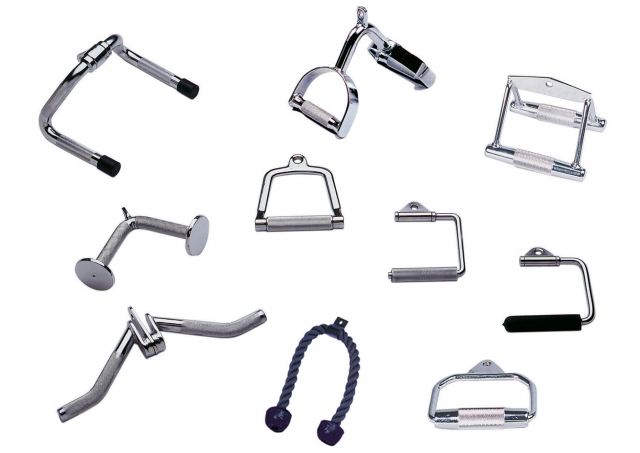
Cable equipment often has a lot of moving parts, and how to use it correctly isn’t always immediately obvious. If you don’t know how to use a particular type of equipment, your best bet is to ask, both to ensure you are performing the exercise safely and to prevent damaging the equipment due to misuse.
In addition to free weights and cables, there are two common types of weight machines: plate-loaded (like Hammer Strength) and machines with weight stacks with pins (referred to as selectorized machines). As with free weights, be courteous and re-rack the weights if you’re using a plate-loaded machine.
If your gym has them, use the disinfectant wipes or spray and towels to wipe down handles, mats, benches, or seats after you’ve used equipment, especially if you’re sweaty. Don’t be afraid to give something a wipe down before you use it, too.
If you’re taking a class, you’ll typically pick out your equipment (weights, mat, step and risers, etc.). Be sure to wipe it down and put it away after class. Let your instructor know if you have any injuries or special needs that might require modification of the workout. Don’t hesitate to stop, or speak up and ask for an alternative if something doesn’t feel right for your body.
Social Interaction
In general, it depends on the gym, the members, and even the time of day when people are there. Not everyone goes to the gym to socialize, and not everyone is outgoing, so don’t feel offended if you smile at someone or say hello and they barely acknowledge you (sometimes they have their tunes playing and didn’t even hear you!). As we often say, do you. If you are the kind of person who smiles and says hello, keep doing it. If you’re a little more reserved, that’s fine too.
Gotta get your workout done, but someone’s using something you want to use? At the gym, it’s understood that whoever’s using something essentially called dibs on it, and other members typically will wait their turn, ask to work in, or do something else. Give and take is the name of the game. Be polite, but don’t be afraid to ask for what you need. If someone’s using the equipment and space you need, and you’re crunched for time, ask to “work in” with them.
By alternating sets with another member (“I go, you go” style), you can maximize your use of time, rather than waiting. It’s always nice to extend this same courtesy if you notice someone waiting to use the equipment you’re using. Invite them to work in with you.
If you don’t have a workout partner and need someone to spot you, ask a trainer, or fellow gym member if you feel confident that they’ll be able to spot you. Look around and trust your gut before you ask anyone. If you’re not sure any of the people around you will be able to help, consider doing another exercise or using lighter weight. Always think about your safety.
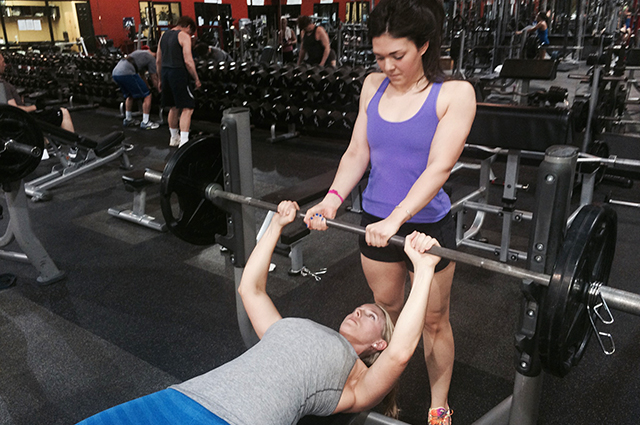
With just a quick scroll through Instagram it’s immediately obvious that a lot of us love to show that we’re rockin’ it (crushing it, killing it, and tearing it up) at the gym. We share for so many reasons: for accountability, to highlight a PR, to celebrate our strength, to motivate a friend. Whatever your reason, go for it! It’s fun to see what our fellow #GirlsGoneStrong are up to.
As you’re setting up a photo, be thoughtful about others who might be waiting for the equipment or who might not want to be in your photo (even in the blurry background). And while we’re on the subject of phones and social media, it’s best to keep the following to a minimum: texting, talking, scrolling through Facebook/Insta/Twitter, or posing for multiple selfies while others are waiting.

Anything else? In general, just ask. If a trainer or a staff member isn’t available, chances are good that there are knowledgeable members who will be happy to help, though they may not be experts. If you have questions, and find some friendly and willing members, strike up a conversation and ask for some advice. However, if you need advice on more serious or sensitive matters, especially relating to an injury or pain, it may be best to ask a personal trainer who works at the gym (or your doctor, ideally).
There you have it—you can’t go wrong with these top gym etiquette tips. Did we miss something? We would love for you to add some of your own tips in the comments below.
Filed under: Fitness

 For now classes are 6pm and 640pm at 2840 Wildwood st in the Boise Cloggers studio.
Book your class NOW!
click this ==>
For now classes are 6pm and 640pm at 2840 Wildwood st in the Boise Cloggers studio.
Book your class NOW!
click this ==>








